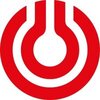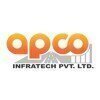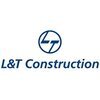Senior Safety Officer
100+ Senior Safety Officer Interview Questions and Answers
Asked in Mundra Petrochem

Q. What are the roles and responsibilities of a safety officer?
The role of a safety officer is to ensure the implementation and enforcement of safety policies and procedures in the workplace.
Developing and implementing safety policies and procedures
Conducting regular safety inspections and audits
Identifying and assessing potential hazards and risks
Providing safety training and education to employees
Investigating accidents and incidents and implementing corrective actions
Maintaining safety records and documentation
Ensuring compliance with...read more

Asked in Hi Tech Projects

Q. How do you ensure that all required documents are fulfilled and maintained according to auditing standards?
I ensure all required documents are fulfilled and maintained by implementing strict document control procedures and regular audits.
Implementing document control procedures to track all required documents
Regularly auditing documents to ensure compliance with standards
Training staff on document requirements and proper maintenance
Utilizing electronic document management systems for easy tracking and access
Senior Safety Officer Interview Questions and Answers for Freshers

Asked in LNJ Denim

Q. What is the recommended distance between two fire extinguishers?
The distance between two fire extinguishers depends on the type of fire extinguisher and the hazard level of the area.
The distance between two fire extinguishers should be based on the maximum coverage area of the fire extinguisher.
The hazard level of the area should also be considered when determining the distance between two fire extinguishers.
For example, in high hazard areas such as chemical storage rooms, the distance between two fire extinguishers should be no more than...read more

Asked in Hi Tech Projects

Q. What are the different types of fires, and how many types of extinguishing media are there?
There are five main types of fires: Class A, Class B, Class C, Class D, and Class K. There are five types of extinguishing media: water, foam, dry chemical, CO2, and wet chemical.
Class A fires involve ordinary combustibles such as wood and paper.
Class B fires involve flammable liquids like gasoline and oil.
Class C fires involve energized electrical equipment.
Class D fires involve combustible metals like magnesium and titanium.
Class K fires involve cooking oils and fats.
Exting...read more

Asked in Hi Tech Projects

Q. What is the classification of industrial accidents according to IS Code 3786?
IS Code 3786 classifies industrial accidents into three categories based on severity.
IS Code 3786 classifies industrial accidents into Minor, Major, and Serious categories.
Minor accidents are those that result in injuries requiring first aid treatment only.
Major accidents are those that result in injuries requiring medical treatment beyond first aid.
Serious accidents are those that result in fatalities or permanent disabilities.
The classification helps in determining the seve...read more

Asked in Hi Tech Projects

Q. What is the Factory Act of 1948, and what regulations does it outline in each chapter?
The Factory Act of 1948 is a legislation in India that regulates the working conditions in factories.
The Factory Act of 1948 is a labor law in India that governs the health, safety, welfare, and working hours of workers in factories.
It outlines regulations related to the employment of young persons, annual leave with wages, working hours, overtime, and more.
Chapter III of the Act deals with the health, safety, and welfare of workers, including provisions for cleanliness, vent...read more
Senior Safety Officer Jobs




Asked in Asian Paints

Q. What is Henry's triangle?what is it's significance?
Henry's triangle is a triangular arrangement of numbers where each number is the sum of the two numbers directly above it.
Henry's triangle is named after the mathematician Henry Bottomley.
It is also known as the Bottomley's triangle or the number pyramid.
Each row in the triangle represents a sequence of numbers.
The first row contains only the number 1.
Each subsequent row is formed by summing the adjacent numbers from the row above.
The triangle has various applications in math...read more

Asked in Hi Tech Projects

Q. What is the risk rating and safe work method statement associated with Hira?
HIRA stands for Hazard Identification and Risk Assessment. It involves assigning a risk rating to identified hazards and developing safe work method statements.
HIRA involves identifying hazards in the workplace
Assigning a risk rating to each identified hazard based on the likelihood and severity of potential harm
Developing safe work method statements to mitigate or eliminate the identified hazards
Examples of safe work method statements include wearing personal protective equi...read more
Share interview questions and help millions of jobseekers 🌟


Asked in Hi Tech Projects

Q. What is the Building and Other Construction Workers (BOCW) Act?
The Building and Other Construction Workers (BOCW) Act is a legislation in India that aims to regulate the employment and working conditions of construction workers.
The BOCW Act was enacted in 1996 to provide social security and welfare measures for construction workers.
It requires registration of construction workers, establishment of welfare boards, and provision of benefits such as health insurance and maternity benefits.
The Act also mandates safety measures at constructio...read more

Asked in KMV Projects Limited

Q. What safety precautions are required for working at heights?
Safety precautions for height work include proper training, use of personal protective equipment, and secure anchorage points.
Ensure workers are properly trained and certified for the specific task
Use appropriate personal protective equipment such as harnesses, helmets, and safety glasses
Ensure secure anchorage points are available and used properly
Regularly inspect equipment and replace any damaged or worn components
Implement a rescue plan in case of emergency
Consider weathe...read more

Asked in Apco Infratech

Q. What innovation strategies have been implemented to improve safety standards in previous projects?
Implemented innovative strategies to enhance safety standards, focusing on technology, training, and collaboration.
Adoption of wearable safety technology, such as smart helmets that monitor environmental conditions and worker vitals.
Regular safety training sessions using virtual reality simulations to prepare staff for emergency situations.
Implementation of a safety management software that tracks incidents and near misses, allowing for data-driven improvements.
Collaboration ...read more

Asked in Apco Infratech

Q. What was your previous salary, and what are your salary expectations?
Discussing previous salary and future expectations for the Senior Officer Safety role.
My last drawn salary was $80,000 annually, reflecting my experience and responsibilities.
I expect a salary in the range of $90,000 to $100,000, considering the increased responsibilities.
I believe in aligning compensation with industry standards and the value I bring to the organization.
For example, in my previous role, I implemented safety protocols that reduced incidents by 30%, showcasing...read more

Asked in Hi Tech Projects

Q. How can you define the hierarchy of risk control?
Hierarchy of risk control is a systematic approach to managing workplace hazards by prioritizing control measures.
Hierarchy includes elimination, substitution, engineering controls, administrative controls, and personal protective equipment (PPE)
Elimination involves removing the hazard completely (e.g. replacing a toxic chemical with a non-toxic one)
Substitution replaces the hazard with a less hazardous alternative (e.g. using a safer cleaning product)
Engineering controls mod...read more

Asked in BramhaCorp

Q. If unsafe work is occurring, would you choose to halt operations on the site or take alternative actions?
Prioritizing safety is crucial; halting operations is often necessary to prevent accidents and ensure worker safety.
Assess the situation: Evaluate the severity of the unsafe condition before deciding.
Engage with workers: Communicate with the team to understand the risks involved.
Implement immediate corrective actions: If possible, rectify the unsafe condition on the spot.
Document the incident: Record details of the unsafe work for future reference and training.
Halt operations...read more

Asked in BramhaCorp

Q. How long will the tools on the site be used to conduct inspections of the machinery, and how many types of tags will be utilized?
Inspection tools will be used regularly, with various tags for safety and maintenance tracking of machinery.
Inspection Frequency: Tools will be used daily or weekly, depending on the machinery's operational demands.
Types of Tags: Common tags include 'Out of Service', 'Maintenance Required', and 'Safety Checked' to indicate the status of equipment.
Color-Coded Tags: Different colors can signify various statuses, such as red for 'Danger' and green for 'Safe to Use'.
Documentation...read more

Asked in BramhaCorp

Q. What documents will be assessed during the new workers' safety induction, and what information will be collected from the contractor?
Key documents and information for new workers' safety induction include safety policies, training records, and contractor details.
Safety Policies: Review of the company's safety policies and procedures to ensure understanding.
Training Records: Verification of any previous safety training completed by the worker.
Personal Protective Equipment (PPE): Assessment of required PPE and confirmation of its availability.
Emergency Procedures: Information on emergency protocols and evacu...read more

Asked in BramhaCorp

Q. What safety precautions do you take when working at height on a full tower to prevent falls and protect the materials?
Implementing comprehensive safety measures is crucial when working at height to prevent falls and protect materials.
Use personal protective equipment (PPE) such as harnesses and helmets to safeguard workers.
Install guardrails and safety nets around the work area to catch any falling materials.
Conduct regular safety inspections of equipment like ladders and scaffolding to ensure they are in good condition.
Implement a fall protection plan that includes training workers on safe ...read more
Asked in Ayati Constructions And Estates

Q. What are the unsafe conditions and unsafe acts associated with mechanical work jobs?
Unsafe conditions and acts in mechanical work jobs include lack of proper training, faulty equipment, inadequate safety measures, and disregard for safety protocols.
Lack of proper training on operating machinery and tools
Faulty equipment such as malfunctioning power tools or machinery
Inadequate safety measures like lack of proper ventilation or protective gear
Disregard for safety protocols such as not wearing seat belts in vehicles or not following lockout/tagout procedures
Un...read more

Asked in Apco Infratech

Q. What are FR, SR, and IR, and how are they calculated?
FR, SR, and IR are key safety metrics used to assess workplace incidents and risks.
FR (Frequency Rate) measures the number of incidents per million hours worked.
SR (Severity Rate) assesses the impact of incidents, calculated as lost workdays per million hours.
IR (Incident Rate) indicates the total number of incidents per 100 employees over a specific period.
Example: If a company has 2 incidents in 1,000,000 hours worked, the FR would be 2.
Example: If those incidents resulted ...read more

Asked in Hi Tech Projects

Q. Could you please describe the Management Information System (MIS)?
MIS is a computerized database that collects, processes, and presents information for decision-making in an organization.
MIS helps in organizing and analyzing data to support management decisions.
It includes software systems and hardware infrastructure to gather and process data.
MIS provides reports, summaries, and dashboards for managers to monitor performance and make informed decisions.
Examples of MIS include customer relationship management systems, inventory management s...read more

Asked in Apco Infratech

Q. What will you do to improve the safety culture?
To improve safety culture, I will implement training, encourage open communication, and recognize safe practices among staff.
Conduct regular safety training sessions to keep staff updated on best practices and protocols.
Establish a safety committee that includes representatives from all levels of the organization to foster collaboration.
Encourage open communication by creating anonymous reporting systems for safety concerns, ensuring staff feel safe to speak up.
Recognize and ...read more
Asked in Laxmi Infra Venture

Q. What safety responsibilities do you have for high-rise building projects?
Senior Safety Officer ensures safety protocols and risk management in high-rise building projects to protect workers and occupants.
Conduct regular safety audits to identify potential hazards, such as falling objects or fire risks.
Implement and enforce safety training programs for all workers, including emergency evacuation drills.
Ensure compliance with local building codes and safety regulations, such as fire safety standards.
Coordinate with architects and engineers to design...read more
Asked in Aquaplast Infraprojects

Q. Can you describe a time when you successfully implemented a new safety program?
Implemented a comprehensive safety program that reduced workplace incidents by 30% within six months.
Conducted a thorough risk assessment to identify key safety issues.
Engaged employees through workshops to gather input and foster ownership.
Developed clear safety protocols and training sessions tailored to specific roles.
Monitored compliance and provided ongoing support to ensure adherence.
Utilized data analytics to track incident rates and adjust the program as needed.
Asked in Aquaplast Infraprojects

Q. Can you give an example of a time you identified a hazard and how you addressed it?
Identified a slip hazard in the workplace and implemented safety measures to prevent accidents.
Conducted a routine safety inspection and noticed a wet floor in the break room.
Immediately placed warning signs to alert employees of the hazard.
Coordinated with the maintenance team to clean and dry the area promptly.
Developed a protocol for regular checks of high-risk areas to prevent future occurrences.
Asked in Aquaplast Infraprojects

Q. How do you handle a situation where an employee is not following safety procedures?
Addressing non-compliance with safety procedures requires a structured approach to ensure safety and compliance.
1. Observe and document the behavior: For example, if an employee is not wearing PPE, note the time and context.
2. Approach the employee privately: Discuss the observed behavior without confrontation, emphasizing safety importance.
3. Provide training or reminders: Offer a refresher on safety protocols, such as a quick training session on PPE usage.
4. Implement corre...read more
Asked in Aquaplast Infraprojects

Q. How do you prioritize safety issues when there are multiple concerns?
I prioritize safety issues by assessing risk levels, regulatory compliance, and potential impact on personnel and operations.
Conduct a risk assessment to identify the severity and likelihood of each safety issue.
Prioritize issues that pose immediate threats to life or health, such as exposed electrical wiring.
Evaluate compliance with safety regulations; non-compliance can lead to legal repercussions.
Consider the potential impact on operations; for example, equipment malfuncti...read more
Asked in Aquaplast Infraprojects

Q. How do you stay current with HSE best practices and regulations?
I stay current with HSE best practices through continuous education, networking, and active participation in industry forums.
Regularly attend HSE conferences and workshops to learn about the latest regulations and practices.
Subscribe to industry journals and newsletters, such as the Journal of Safety Research, to stay informed on new studies and findings.
Participate in online forums and professional networks, like the National Safety Council, to exchange knowledge with peers....read more
Asked in Aquaplast Infraprojects

Q. What are the most common workplace hazards, and how can they be mitigated?
Common workplace hazards include slips, falls, and exposure to harmful substances, which can be mitigated through training and safety protocols.
Slips, trips, and falls: Ensure proper housekeeping and use non-slip mats in wet areas.
Chemical exposure: Provide proper PPE and training on handling hazardous materials.
Ergonomic hazards: Implement ergonomic assessments and provide adjustable workstations.
Electrical hazards: Regularly inspect equipment and ensure proper grounding and...read more
Asked in Aquaplast Infraprojects

Q. What strategies do you use to promote a culture of safety in the workplace?
I implement training, communication, and engagement strategies to foster a proactive safety culture in the workplace.
Conduct regular safety training sessions to keep employees informed about best practices and new regulations.
Encourage open communication by establishing a safety suggestion program where employees can share their ideas and concerns.
Lead by example; demonstrate safe practices in daily operations to inspire others to follow suit.
Recognize and reward safe behavio...read more

Asked in Keventer

Q. What is HIRA, and what is the process of preparing it?
HIRA (Hazard Identification and Risk Assessment) is a systematic process to identify hazards and assess risks in the workplace.
Identify hazards: Recognize potential hazards in the workplace, such as chemical spills or machinery malfunctions.
Assess risks: Evaluate the likelihood and severity of incidents related to identified hazards.
Prioritize risks: Rank risks based on their potential impact to focus on the most critical issues first.
Implement controls: Develop and implement...read more
Interview Questions of Similar Designations
Interview Experiences of Popular Companies






Calculate your in-hand salary
Confused about how your in-hand salary is calculated? Enter your annual salary (CTC) and get your in-hand salary


Reviews
Interviews
Salaries
Users










